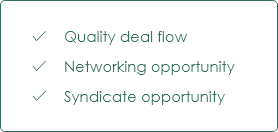Whether you own a small grocery store or a medium enterprise, you will need indicators to help you lead your business and keep you on the right track. Performance indicators are many, but what are the most critical ones in the startup journey? We will highlight four fundamental indicators; each entrepreneur needs to monitor and measure periodically.
Bringing Back Customer Indicators:
The first type: Customer Churn Rate (CCR), is simply customers who stopped making purchases. The method of calculating the rate is
(Number of customers beginning of the month - Number of customers end of the month) / Number of customers beginning of the month.
One way to reduce customer churn rate is to offer your customers' incentives to stay in your application/service by providing loyalty programs.
- The second type: Purchase Repeat Profitability (RPP), meaning the possibility of the customer making another purchase. The method of calculating is:
(Number of purchases / Total number of customers).
To increase your purchase renewal rate, you can give discounts.
- The third type: Repeated Purchase Rate (RPR) is the percentage of customers who have made purchases more than once. The calculation method is as follows:
(Number of customers who have purchased more than once / Total number of customers).
To increase RPR, offer rewards and points.
Indicators for Obtaining Maximum Revenue:
The first type: Average Order Value (AOV) measures the average amount of money a customer spends per purchase. To measure the AOV, calculate
(Total revenue / Total number of orders).
You can increase the average order value by offering bundles.
- The second type: Profitability Per Order (PPO) measures the profit per order.
To calculate the value:
(Total Revenue x Average Profit Margin) / Total number of orders)
You can improve the profit PPO by promoting products with a higher profit.
The third type: Purchase Frequency (PF), is directly related to your store's frequent purchase rate, but instead of looking at the frequent purchases specifically, it refers to the average number of times a shopper purchases in your store.
To calculate the frequency of purchases:
(Number of orders / Number of unique customers in the same period)
Make sure that the same customer is not counted twice. To increase your purchase frequency, you can send personalized retention emails that make the customer feel special and acknowledged.
- The fourth type: Time Between Purchases (TBP) is when a customer purchases in a given period. To measure the TBP, calculate
(365 (or any period) / purchase frequency)
One of the ways to reduce the time between purchases is to build relationships with your customers by interacting with them on social media platforms and analyzing their behavior after purchasing to improve accordingly.
Customer Retention Indicators:
The first type: Customer Lifetime Value (CLV), which is the total amount of money that the customer is expected to spend on the company's products. To calculate it
(Average order total X Average number of purchases in a year X Average retention time in years)
Experts recommend calculating the average as 1-3 years. To increase the value you get from each customer, be an easy-to-reach and quick-to-shop from business.
The second type: The Recovery Rate (RR), which is the percentage of loyalty rewards that are used. The rate can be calculated as follows
(Number of loyalty points used / Number of loyalty points issued)
You can increase the use of points by offering more ways to get rewards and points.
Loyalty Measurement Indicators:
The first type: Customer Retention Rate (CRR) is the percentage of customers that stay with you over time. To measure the rate you can use the following formula:
(Number of customers at the end of the period - Number of acquired customers) / Number of customers at the beginning period)
Use retention marketing as a method to increase profitability from existing customers and to increase the number of return customers. For example, reconnect with shoppers after purchasing to thank them and offer additional help to help them get the most out of your products or services.
The second type: Loyal Customer Average (LCR) allows you to distinguish between loyal and regular customers. The method for calculating the value is
(Number of customers who have purchased +4 times / Number of customers).
One way to increase LCR is by implementing loyalty programs to motivate customers to buy and interact with the brand.
Undoubtedly, following all these indicators is difficult and tiring, but it is essential because they enable you to understand the performance of your company and continuously develop.




